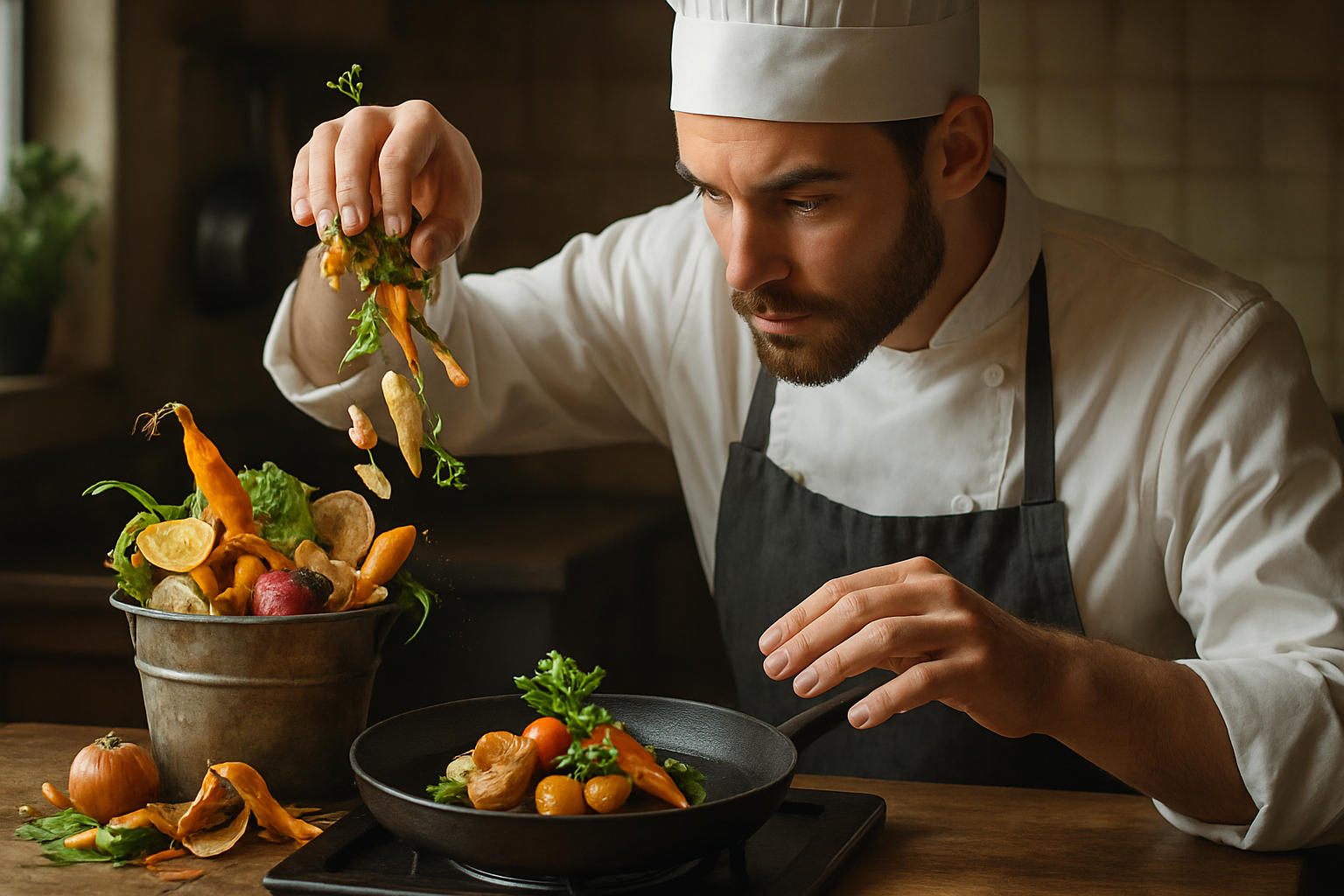Culinary Alchemy: Transforming Leftovers into Gourmet Delights
Leftover makeovers are the unsung heroes of the culinary world. This innovative approach to cooking not only reduces food waste but also unleashes creativity in the kitchen. From reimagining yesterday's roast chicken to crafting exquisite desserts from stale bread, the art of transforming leftovers is a skill every food enthusiast should master.

Consider texture when repurposing. Crisp up soggy vegetables in a hot pan or blend them into a smooth soup. Transform dry meat into tender fillings for tacos or sandwiches. By focusing on enhancing textures, you can breathe new life into dishes that might otherwise be destined for the bin.
Flavor combinations are crucial in leftover makeovers. Introduce new spices or sauces to completely change the profile of a dish. A bland chicken breast can be reborn as a spicy curry or a zesty lemon piccata. Don’t be afraid to mix cuisines – last night’s Italian meatballs could be tomorrow’s Mediterranean wrap.
The Sustainable Chef’s Toolkit
Equipping your kitchen for leftover transformations doesn’t require fancy gadgets. A good blender or food processor is invaluable for creating smooth sauces or pâtés from various leftovers. A well-seasoned cast-iron skillet can crisp up almost anything, giving new life to soft vegetables or meats.
Stocking your pantry with versatile ingredients is essential. Keep a variety of spices, vinegars, and oils on hand to quickly change flavor profiles. Staples like pasta, rice, and tortillas can turn small amounts of leftovers into satisfying meals. Fresh herbs, citrus fruits, and garlic are magical ingredients that can elevate any dish.
Learn the art of preservation to extend the life of your ingredients. Quick pickling can transform bland vegetables into tangy accompaniments. Freezing herbs in oil creates flavor bombs for future dishes. By mastering these techniques, you’ll always have flavorful additions at your fingertips.
From Humble to Haute Cuisine
Elevating leftovers to gourmet status is an art form. Start by deconstructing your leftovers into their basic components. That lasagna could become a crispy-edged, individually portioned stack, garnished with fresh microgreens for an upscale presentation.
Experiment with unexpected pairings. Leftover roast beef can be thinly sliced and served atop a bed of arugula with shaved parmesan and a balsamic reduction for an elegant carpaccio-inspired dish. Day-old bread becomes the star in a panzanella salad, absorbing the flavors of fresh tomatoes and herbs.
Consider the power of presentation. Use ring molds to create perfectly shaped portions, or invest in a set of small ramekins for individual servings. Garnish with edible flowers, herb oils, or a dusting of specialty salts to add that final gourmet touch.
The Economics of Leftovers
Embracing leftover makeovers is not just a culinary adventure; it’s a smart economic choice. By repurposing ingredients, you stretch your food budget further, reducing overall grocery expenses. This approach allows you to enjoy high-quality ingredients more often, as you’re maximizing their use across multiple meals.
Meal planning takes on a new dimension when you factor in leftovers. Instead of cooking from scratch every night, plan a larger meal early in the week with the intention of transforming it later. This strategy saves time and energy, allowing for more complex dishes on busy weeknights.
Consider the environmental impact of reducing food waste. By creatively using leftovers, you’re contributing to sustainability efforts, reducing the amount of food that ends up in landfills. This eco-conscious approach to cooking aligns with the growing global movement towards more sustainable living practices.
The Future of Leftover Cuisine
As sustainability becomes increasingly important in the culinary world, chefs and home cooks alike are embracing the challenge of creative leftover use. This trend is inspiring new cookbooks, cooking shows, and social media challenges focused on reducing food waste through innovative recipes.
Technology is playing a role in this movement, with apps designed to help users inventory their refrigerators and suggest recipes based on available ingredients. Smart kitchen appliances are being developed with features to track food freshness and suggest uses for items nearing expiration.
The future of leftover cuisine may see restaurants offering “upcycled” menus, showcasing dishes made entirely from repurposed ingredients. This approach not only reduces waste but also challenges chefs to push the boundaries of creativity, resulting in unique and exciting culinary experiences.
Leftover Transformation Tips
• Always cool leftovers quickly and store properly to maintain food safety
• Label and date stored leftovers to track freshness
• Think “components” rather than “completed dishes” when storing
• Use aromatic ingredients like garlic or ginger to refresh flavors
• Experiment with different cooking methods to change textures
• Consider international cuisines for inspiration in repurposing
• Don’t overlook breakfast as an opportunity for creative leftover use
• Blend overripe fruits into smoothies or bake them into muffins
• Create “kitchen sink” dishes like frittatas or stir-fries to use small amounts of various leftovers
• Share your creations to inspire others and get new ideas
In conclusion, transforming leftovers is a culinary art that combines creativity, sustainability, and economic savvy. By mastering this skill, you’ll not only reduce waste and save money but also embark on a journey of culinary innovation. Embrace the challenge of leftover makeovers, and watch as your kitchen becomes a laboratory of delicious possibilities.





